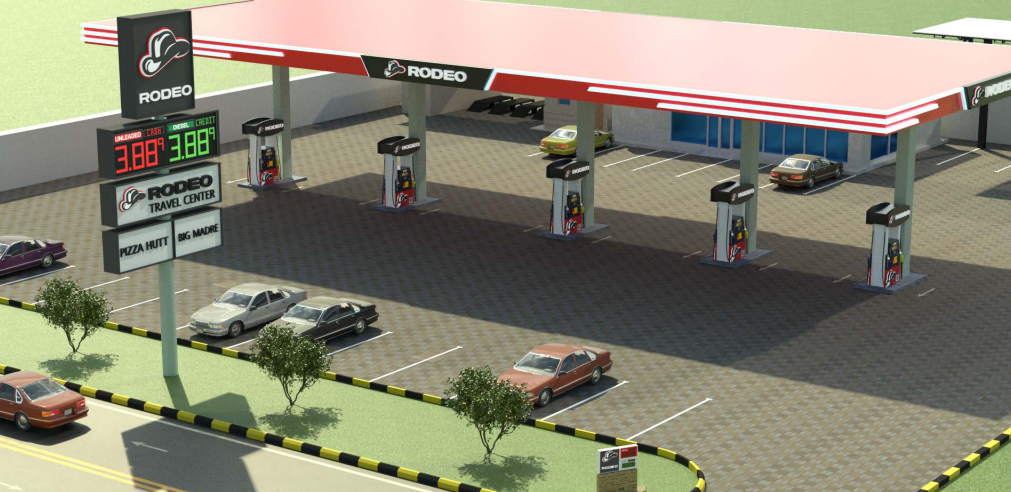The Evolution of Modern Fuel Price Display Technology
The landscape of fuel stations has dramatically transformed over the years, with traditional manual price boards giving way to sophisticated electronic displays. At the heart of this transformation is the fuel station sign, a critical component that keeps customers informed and drives business success. As environmental consciousness grows and energy costs rise, solar-powered solutions have emerged as game-changers in the industry.
Modern fuel price displays combine cutting-edge LED technology with renewable energy systems, creating a sustainable and reliable solution for station operators. These advanced systems represent a significant leap forward from their predecessors, offering enhanced visibility, remote management capabilities, and impressive energy efficiency.
Solar-Powered Display Systems: Core Components and Functionality
Essential Hardware Elements
A solar-powered fuel station sign consists of several crucial components working in harmony. The solar panels, typically mounted above or adjacent to the display, capture sunlight and convert it into electrical energy. High-capacity batteries store this power for use during nighttime and periods of limited sunlight. The LED display panels themselves are designed for minimal power consumption while maintaining excellent visibility.
The system also includes charge controllers and power management units that optimize energy distribution and protect the components from voltage fluctuations. These sophisticated controllers ensure that the stored energy is used efficiently, extending battery life and maintaining consistent performance.
Advanced Power Management Features
Modern fuel station signs incorporate intelligent power management systems that automatically adjust brightness levels based on ambient light conditions. During bright daylight hours, the display operates at higher intensity, while dimming during darker periods to conserve energy. This adaptive functionality significantly reduces power consumption without compromising visibility.
The system's built-in monitoring capabilities provide real-time data on battery levels, charging status, and power consumption patterns. Station operators can access this information remotely, allowing them to anticipate and prevent potential power-related issues before they affect operations.
Winter Performance and Reliability Measures
Cold Weather Adaptations
Solar-powered fuel station signs are engineered to withstand harsh winter conditions. The solar panels utilize specialized coatings that prevent snow and ice accumulation, while the electronic components are housed in weather-resistant enclosures rated for extreme temperatures. Battery systems are specifically designed to maintain performance in cold conditions, using advanced chemistry that resists capacity loss in low temperatures.
Heating elements may be incorporated into critical components to ensure reliable operation during freezing conditions. These systems activate automatically when temperatures drop below certain thresholds, protecting sensitive electronics while consuming minimal power from the battery reserves.
Energy Storage Solutions
To maintain continuous operation during extended periods of limited sunlight, these systems employ oversized battery banks that provide several days of autonomous operation. The energy storage capacity is calculated based on regional weather patterns and historical solar radiation data, ensuring sufficient power reserves even during the most challenging winter conditions.
Advanced lithium-ion batteries, often used in these installations, offer superior cold-weather performance compared to traditional lead-acid alternatives. Their higher energy density and better low-temperature characteristics make them ideal for winter operations, maintaining stable voltage output even in sub-zero temperatures.
Operational Sustainability and Backup Systems
Redundancy and Failsafe Features
Modern fuel station signs incorporate multiple layers of redundancy to prevent downtime. Backup power systems can automatically switch to alternative energy sources if solar charging becomes insufficient. Some installations include hybrid designs that can draw minimal grid power when necessary, ensuring uninterrupted operation during extended periods of adverse weather.
Smart monitoring systems continuously assess system health and can predict potential issues before they cause failures. These predictive maintenance capabilities allow operators to schedule interventions during favorable weather conditions, minimizing the risk of unexpected downtime.
Long-term Performance Optimization
Regular system analysis and performance optimization ensure that solar-powered displays maintain their efficiency over time. Software updates can improve power management algorithms, while preventive maintenance schedules address potential issues before they impact operations. The modular design of modern fuel station signs allows for easy component replacement and upgrades, extending the system's operational lifespan.
Manufacturers continue to develop more efficient LED technologies and solar collection systems, offering retrofit options that can enhance the performance of existing installations. This ongoing evolution ensures that solar-powered displays remain a viable and sustainable solution for fuel station operators.
Frequently Asked Questions
How long can a solar-powered fuel station sign operate without sunlight?
Modern solar-powered fuel station signs are designed with battery systems that typically provide 5-7 days of autonomous operation without solar charging. This duration can be extended through efficient power management and the use of high-capacity battery banks tailored to local weather patterns.
What maintenance is required for solar-powered price displays?
Regular maintenance includes cleaning solar panels, checking battery conditions, and inspecting electrical connections. Most systems require professional inspection annually, though modern remote monitoring capabilities allow for continuous system health assessment and predictive maintenance scheduling.
Are solar-powered signs more cost-effective than traditional electric displays?
While initial installation costs may be higher, solar-powered fuel station signs typically offer significant long-term savings through eliminated electricity costs and reduced maintenance requirements. The return on investment period usually ranges from 3-5 years, depending on location and usage patterns.

